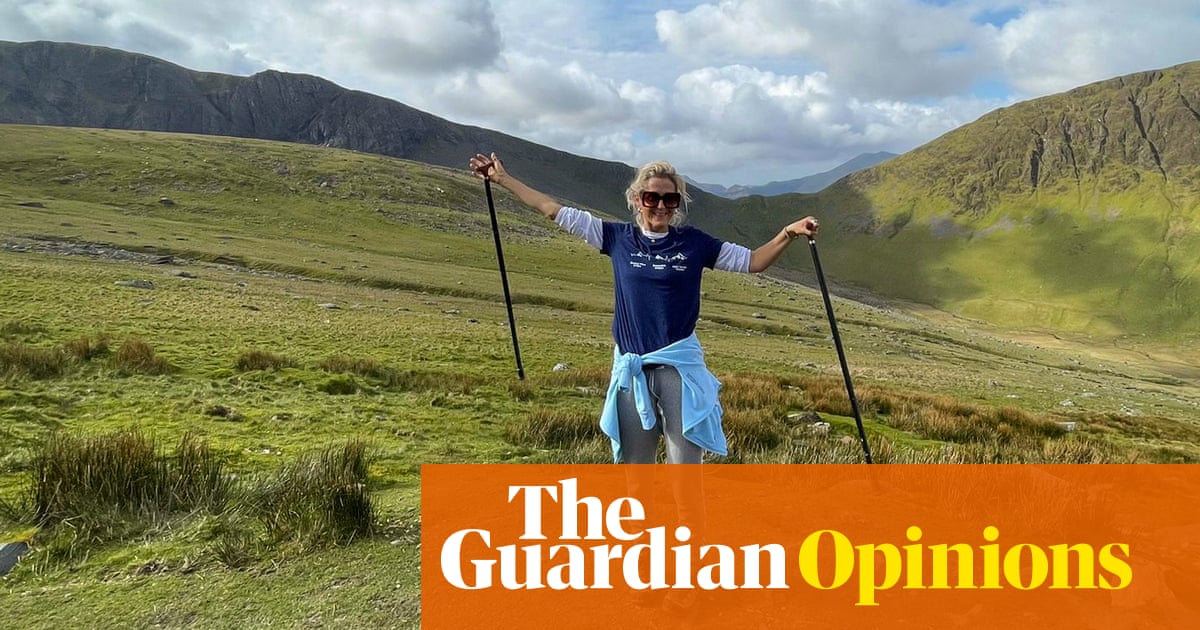What’s the best way to support a friend who has had a life-shattering, traumatic accident? I didn’t have a clue when my friend Martha had a catastrophic car crash 20 years ago, broke 26 bones, had a stroke, and suffered serious internal injuries. It wasn’t clear whether she was going to live, or, if she did survive, how radically her life was going to be restricted by her injuries.
None of her friends knew how to handle the situation. In the first few weeks, we muddled along. When I visited a few days after she had been moved out of intensive care, I was alarmed to find her looking absolutely her normal, smiley self, except horizontal and unable to move. I got most things wrong that afternoon. Panicking, I embarked on a long story about a friend of a friend who had broken her spine and eventually recovered – but I didn’t get to the happy ending because a nurse interrupted to say that I needed to stop talking about depressing things. Martha was thirsty, but her arms weren’t working, so I lifted a glass with a straw to her mouth, and ended up spilling water over her.
Another friend bought her beautiful pink silk pyjamas, refusing to accept that the seriousness of the crash meant that she would only be wearing hospital gowns for at least the next year. Someone else sent a huge ball of wool and fat knitting needles because he hoped the activity might help get her hands working again and thought she might want to learn to knit (she didn’t).
Others got it more right. In the first weeks, two friends took turns sleeping on the floor by her hospital bed, so when she woke up in the night, feeling terrified, there was someone to talk to. People made hanging mobiles with photos to suspend from the ceiling of her room, and brought food that tasted nicer than hospital meals. One really kind person sent her a postcard every day that she was in hospital – a period that stretched over almost two years.
As friends, we were hovering at the periphery of the crisis, trying to radiate cheerfulness. Martha Lane Fox was lucky to have her parents, her boyfriend, her brother, aunts, all doing the real heavy lifting, working out how best to get her the right medical care. She is clear that she only survived the initial accident and the many complications that followed because of this really vital support from her family, and, crucially, because she had money from launching an internet business, Lastminute.com, and was able to pay for the inevitable costs that arise from a slow, arduous recovery – supplementary private nursing, extra physio, someone to help with all the unexpected administration that arises when life is upended.
To mark 20 years since the crash, a group of us have been walking with her up Britain’s highest peaks, raising money for several charities, including Day One Trauma, an organisation that works to put in place support networks for people who have endured similarly disastrous accidents, but who have fewer resources and fewer people to call on for help. We climbed Snowdon (Yr Wyddfa) in the sun in May and Scafell Pike a few weeks later in much slippier, mistier conditions – very challenging for someone who has had 47 operations to put their body back together. This Sunday, we hope to make it to the top of Ben Nevis.
Day One Trauma was inspired by Peter Giannoudis, an orthopaedic trauma surgeon, who realised through his work at Leeds general infirmary that medical advances meant more people were surviving previously unsurvivable injuries, but that their wider, non-clinical needs could not be met by the NHS. Launched nationally in 2021, the charity offers practical, financial, legal and emotional support to patients and their families, providing a patchwork of different services to help people rebuild their lives.
The charity properly understands what help people need in the wake of cataclysmic accidents. It has an emergency fund for families with limited means to help cover costs incurred during their relative’s stay in hospital and offers family counselling to help people come to terms with how their lives may have changed beyond all comprehension. There are also peer support volunteers – people who have been through similar trauma and who have a greater sense of the long-term impact catastrophic injuries can have; these people can offer empathy rather than sympathy, and can discuss the implications of different, complex clinical procedures.
We did our best. Sometimes, the visits were weirdly jolly. At the beginning, Martha says she was so off her rocker on morphine and other pain-relieving drugs that she only had a very hazy grasp of how badly injured she was. Most of us were in our early 30s; we swapped meeting her for a drink in a bar, for hanging out in a series of high-dependency unit hospital rooms, while she remained flat on her back with a scary metal cage sticking out of her flesh – the pelvic fixator, which was holding her shattered bones in place. Sometimes, it was harder to stay upbeat; one conversation (against the hum of a gently undulating anti-bed sore mattress) jumped between discussing a wedding she couldn’t attend and her worry that she might die in an operation scheduled for the next day.
Lucy Nickson, chief executive of Day One Trauma Support, told me visitors shouldn’t worry too much about not knowing what to say. “Little things matter. It might just be helping apply mascara or organising the care of a much-loved pet – it’s about just being present and listening, rather than looking too far ahead into the future, and promising they’re going to recover.” Two decades later, Martha says she appreciated anything that warded off loneliness and isolation – even hilariously inappropriate pyjamas.
